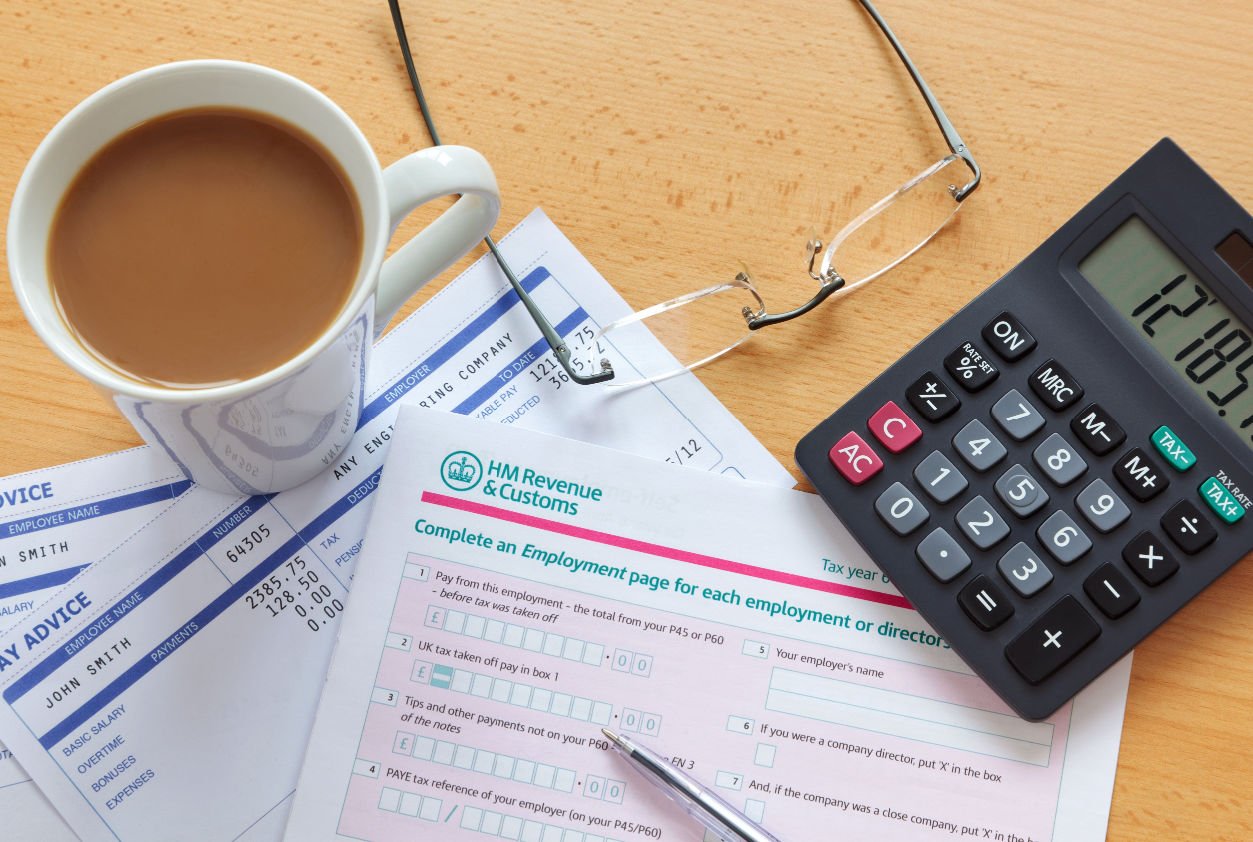EIS loss relief: what it is and how to claim it
Among the first of the UK's venture capital schemes, the Enterprise Investment Scheme (EIS) was introduced in 1994 to be the successor to the Business Expansion Scheme.
Promoting investment into unlisted early-stage businesses, the scheme has undergone a number of changes over the years, but the main goal has remained - ensuring a steady stream of capital to the businesses that need it the most with the help of especially generous EIS tax reliefs.
Over £24 billion of funds have been raised for more than 33,000 early-stage businesses via the EIS since its introduction. Much of this success has been linked with its ability to offset a proportion of the risk associated with investing in early-stage companies through a number of tax incentives aimed at reducing the total exposure while maximising potential upside.
One of the most interesting, yet least understood of these tax advantages is EIS loss relief, a tax relief offering investors the ability to minimise the impacts of a loss in the value of shares should an unexpected event arise, further enhancing the tax benefits available under the scheme.
An overview of EIS loss relief
Whilst EIS investment opportunities are vetted to have a long-term vision for growth in place, EIS offers loss relief in the event that a loss is realised on your investment by offsetting the loss against your marginal rate of income tax or capital gains tax (CGT).
By offsetting a potential loss against their income tax bill for the current or previous tax year, or instead against their CGT bill for the current or future years, loss relief allows investors to mitigate some of the risk associated with investing in startups and scale-ups.
The more popular route of the two (though not necessarily the more appropriate one due to personal tax circumstances), offsetting a loss against income tax relief usually provides a higher relief, due to the higher rate of income tax compared to capital gains tax. Applied at a marginal rate of 20%, 40%, or 45%, this depends on whether you are a basic, higher or additional rate taxpayer.
Such a relief is allowed due to EIS companies being classified as a qualifying trading company - that is a UK-based business with a qualifying trade, not listed on a recognised exchange with gross assets under £7m before the round. If these conditions sound familiar, this is because they are the same as those required for EIS eligibility, so while a company does not need to have EIS to qualify for loss relief, it does need to satisfy the same conditions.
EIS share loss relief is calculated by multiplying your effective loss (the value you originally invested minus the return you realised and the value of income tax relief you claimed) by either your marginal rate of income tax or rate of capital gains tax (dependent on which route you choose).
EIS Loss Relief Example
Should a higher rate taxpayer investor invest £50,000 in an EIS opportunity, of which they have already claimed £15,000 back in income tax and only realised £5,000 in returns, they could then multiply their effective loss of £30,000 by their 45% rate of income tax to claim back a total of £13,500 in loss relief.
A step-by-step guide on how to claim the EIS loss relief
As with eis deferral relief and IHT relief, you do not need to have claimed income tax relief. However when you claim the loss against income, you will automatically qualify the shares for income tax relief, so this can be claimed at the same time, provided the company has not already had EIS tax relief withdrawn.
Qualifying capital losses can be set against income arising in the year of the capital disposal (or negligible value claim). You may also elect for the capital loss to be treated as arising in the immediately preceding tax year and so offset against income from that year. This could give rise to a higher rate of tax relief if your marginal rate of tax was higher in the previous tax year (due, for example, to higher income or different tax rates that year)
If you complete a self-assessment tax return, you can claim EIS losses against either income tax or capital gains tax by completing the SA108 form. To report this, the section “Unlisted shares and securities” should be completed, stating the amount of the loss to offset against income, both for the current tax year and the amount for the preceding year. You should also state the amount of the loss that is attributable to EIS.
If the loss is to be offset against capital gains tax, this is achieved by using the same form, but it should be completed to show the loss attributed to capital gains. If you have already reduced your income tax liability to zero, or have reduced your capital gain to the allowable limit, you can carry any additional loss forward as with any capital loss.
Loss relief claimed through self-assessment may reduce the amount of taxation that beneficiaries or executors need to pay for the relevant tax year. If that means they have already paid too much income tax, they can request that HMRC repay the excess either by cheque or directly into their bank account, by completing the “If you have paid too much tax” section of the self-assessment form.
If shares in an EIS-qualifying company fall in value to zero, in certain circumstances, investors may have the option of making a negligible value claim, by informing HM Revenue & Customs that the shares are worth nothing or next to nothing, even if they haven’t been sold. Usually, a claim for loss relief is based on the price at which you sell your shares, but if the shares have nil value you may be able to make a claim for the amount of the effective loss.
You can provide details of your negligible value claim in box 54 ("Any other information") on page CG4 of the Capital Gains Tax summary pages, or in your computations included with your tax return. This is separate from reporting the associated loss, though they may both be reported on the same return if you are declaring the loss while making a return, using “NVC” for the claim or election code.
If you’ve never made a gain and aren’t registered for Self-assessment, you can write to HMRC instead.
Useful information to know when claiming EIS loss relief
The loss relief, when aggregated with all other specified income tax reliefs, is limited to a maximum of £50,000 or, if greater, 25% of the taxpayer’s “adjusted total income” for the tax year.
You don’t have to report losses straight away - you can claim up to 4 years after the end of the tax year that you disposed of the asset.
Loss relief can reduce the investor's exposure to 38.5% of the original investment if the investor elects to set off the loss against income tax due for the current year, assuming the investor pays income tax at a marginal rate of 45%.
Negligible value claims are treated as if you sold and then immediately acquired the asset, with a value of zero, meaning you must own the asset when claiming and still own the asset after the claim. However, if you purchase an asset with a negligible value, you may not then claim, as it must become negligible while you are holding it, not at the time of purchase.
If making a negligible value claim, you can choose to specify an earlier time when you will be treated as though you had disposed of and immediately reacquired the asset. If you want to specify an earlier time then you have to meet all of the necessary conditions to make the claim at the time the claim is made. In addition, you must have owned the asset at the earlier specified time and the asset must have become of negligible value on or by the earlier specified time.
The earlier time you choose can be up to 2 years before the start of the tax year in which you make the claim. So, if you submitted your tax return on 31 January 2024 and included a claim with that tax return, you could specify an earlier time from 6 April 2021 to 30 January 2024.
The EIS3 certificate issued must be kept safe, as HMRC may request that the original be sent in as evidence for the claim. As they are only issued as hard copies, another form must be requested if lost which again can take a few months.
The information here is provided as general guidance. If you are unsure about any of the details regarding EIS loss relief, professional advice should be sought. Similarly, if you have any specific questions you can contact the team at Small Company Enterprise Centre on 0300 123 1083 or email enterprise.centre@hmrc.gsi.gov.uk.
Making investments in EIS-eligible companies
Providing some of the most generous tax reliefs and incentives currently available to UK investors, the Enterprise Investment Scheme has played a pivotal role in driving forward growth in the UK's startup economy over the past three decades.
Boasting a range of EIS-eligible investment opportunities, stretching back to our very first in 2015, the GCV portfolio demonstrates our belief that by investing into opportunities under the Enterprise Investment Scheme, investors can directly support the growth of the next generation of British businesses whilst bolstering their portfolio with growth and impact.
EIS Loss Relief FAQ
1. What happens if my tax liability is lower than the amount of the EIS loss relief I am eligible for? Can I carry the relief forward?
If your tax liability is lower than the amount of EIS loss relief you're entitled to, you can indeed carry the relief forward, making it an effective cost-saving strategy. Just like with many other tax reliefs, the unused portion can be carried over to future tax years.
This means if you can't fully benefit from the relief in the current year due to a lower tax liability or lower taxable income, you won't lose out. The unused relief can be applied against income tax in subsequent years until the full benefit has been used up.
It's important to keep detailed records of your losses and claims so you can ensure the relief is applied correctly in future returns.
2. Are there specific industries or types of businesses that are more likely to qualify for EIS loss relief, or is it open to all early-stage companies?
EIS loss relief is available to businesses that meet the qualifying criteria set by HMRC, which mainly revolves around the size and stage of the company rather than the industry. However, certain industries may naturally see a higher number of EIS-eligible companies, especially those focused on innovation, technology, and scalable business models.
While companies in sectors like property development, financial services, and investment funds are typically excluded, startups in industries such as tech, renewable energy, healthcare, and other emerging markets often attract EIS investments.
Ultimately, any business that satisfies HMRC’s requirements, including having gross assets under £7 million, fewer than 250 employees, and engaging in a qualifying trade, can qualify for EIS, regardless of its industry.
3. Is there a time limit for claiming negligible value on my shares? How long do I have to report this to HMRC?
Yes, there is a time limit for claiming negligible value on your shares. You can claim negligible value up to two years after the end of the tax year in which you intend to make the claim.
Essentially, if your shares drop to near-zero value, you have a window of up to four years from the end of the tax year when the shares became negligible to report the loss to HMRC. If you choose to specify an earlier time when the shares became negligible, this could go back as far as two years before the start of the tax year in which you are making the claim.
It’s crucial to stay mindful of these timelines to ensure you don’t miss the opportunity to benefit from the loss relief.
4. Can loss relief be applied to multiple investments at once, or does each claim have to be filed separately for different investments?
EIS loss relief can be applied to multiple investments, but each loss needs to be reported separately. If you've made multiple EIS investments and incurred losses on more than one, you must file individual claims for each investment.
This is done through the self-assessment process by listing each investment's loss separately on your tax return. Although you must account for each loss individually, there is no restriction on claiming loss relief on several investments in the same tax year.
Keeping a detailed record of each EIS investment and loss will help ensure that all claims are accurately filed.
5. How long does it usually take for HMRC to process a claim for EIS loss relief, and are there any common delays investors should be aware of?
The processing time for an enterprise investment scheme loss relief claim by HMRC can vary, but on average, it can take anywhere from 4 to 12 weeks. If you’re submitting your claim through a self-assessment tax return, it will generally be processed according to the normal timelines for tax returns, which can sometimes extend longer during peak periods such as tax season.
One common delay in processing is related to missing or incomplete information, especially if you haven’t provided the necessary EIS3 certificates or if HMRC requires additional clarification on the details of your loss.
To avoid delays, make sure all supporting documentation is complete and up-to-date, and respond promptly to any queries from HMRC.
%20(3)%20(2).jpg)









